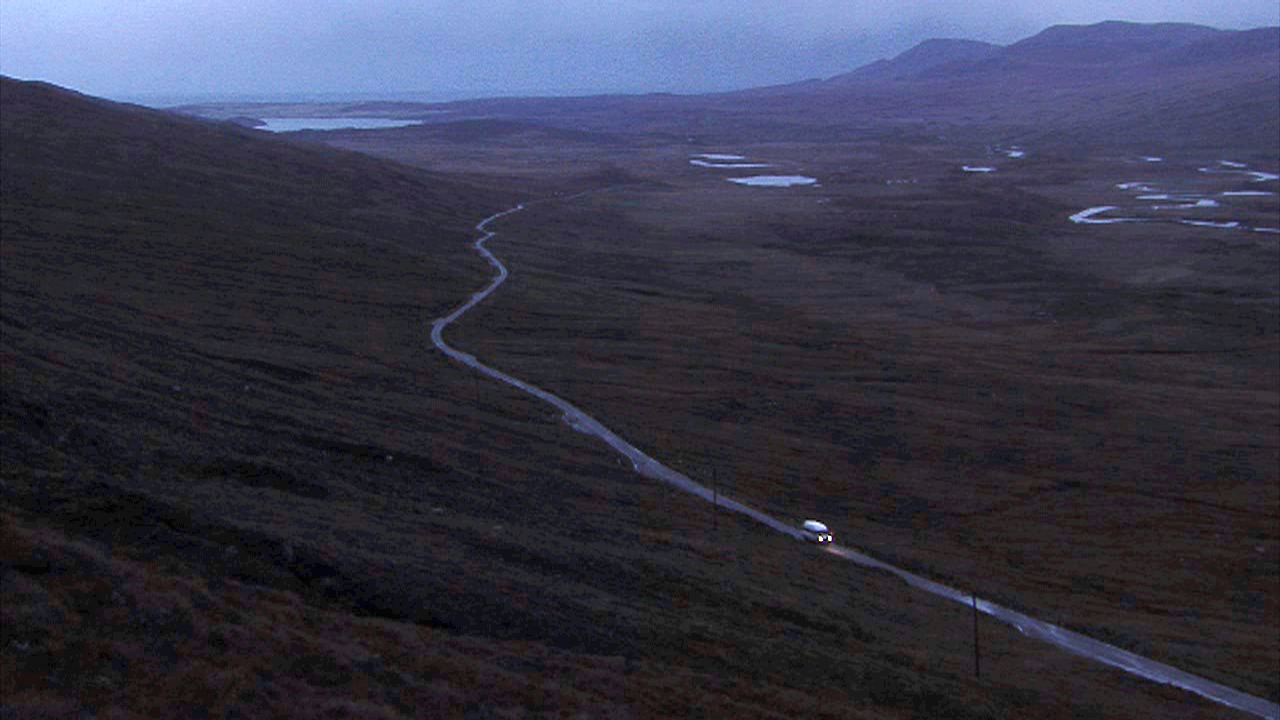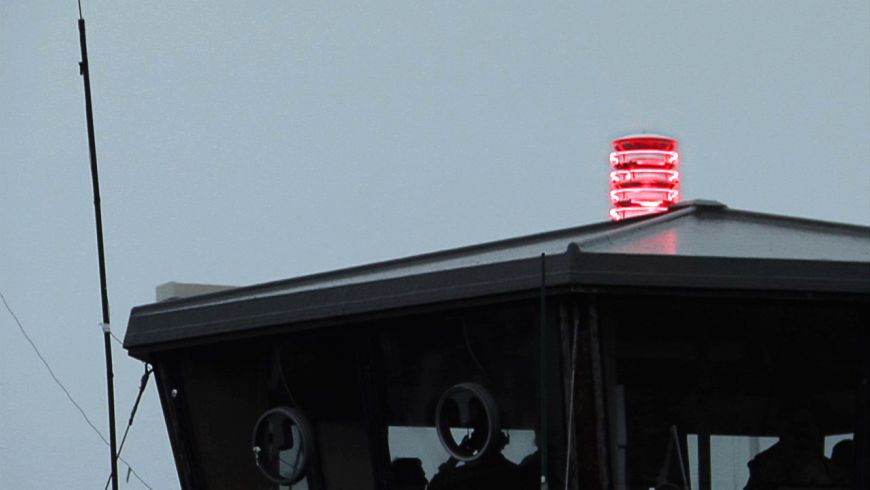Watch Balnakiel now on FVU Watch.
All individuals, it is said, are a mixture of nature and nurture, of inherited traits and environmental influences. The artist Shona Illingworth will have had regular cause to ponder this thought. The daughter of an artist mother and a wartime serviceman father, she has gone on to dedicate much of her creative practice to an innovative exploration of the insidious encroachment of military power and its technologies onto everyday life, making work that straddles multiple mediums and that equally artfully combines polemical argument and philosophical theory with personal history and compelling, often intimate psychological disclosure.
In Illingworth’s case, it is impossible not to wonder how much these preoccupations might have been formed in the place she grew up. Balnakiel is an artist colony and craft village in the remote north-west of Scotland that happens be sited directly next to one of the largest military bombing ranges in the UK. An oasis of creative retreat, and a Utopian bubble of back-to-nature alternative thinking, it was also absolutely at the frontline of NATO war games and manoeuvres (especially during the Cold War), with spectacular displays of firepower raining thunder at regular intervals throughout the year. The weird proximity of these wildly opposing interests cannot fail to have left a mark.
Balnakiel (2009) is an immersive video essay that deftly captures the contradictory tenor of this extraordinary place. Images unfurl like changing weather patterns over the course of its 35-minute length, as we are presented with different views of the local landscape through alternating eyes: from above, and from the ground; in the crosshairs of an overflying pilot, and through the keyhole of domestic life. Recollections are provided by family and friends and extended to include those of residents of nearby Durness, whose own baleful history, dating from the time of the infamous Highland clearances, when thousands of tenant farmers were uprooted from the land, adds to the rumbling narrative of conflict and division that overshadows the area. These rumbling tensions are evoked in a shifting, unsettling soundscape, in which a dissonant hubbub of voices and noises is punctuated by moments of eerie silence. Like an echo in an empty valley, the aftershocks of turbulence and disruption continue to be felt long after the original havoc has passed.
In Balnakiel, and an earlier companion piece, The Watch Man (2007), Illingworth collaborated closely with cognitive neuroscientist Martin Conway to better understand the complex effects of episodes of trauma on the mind. Conversations with Conway and individual protagonists, including Illingworth’s father, worked to help dispel the fog of memory caused by the fog of war (and the horrors and atrocities it brought in its wake) or sought to illuminate (and alleviate) the state of gloom that can sometimes settle over people in a landscape that has been repeatedly ravaged, and whose history still haunts the collective psyche. Freud called psychoanalysis ‘the talking cure’ – a means to probe the unspoken and unconscious; a will-to-recover (in both senses of the word). And there is something similar in Illingworth’s method – an attempt to come to terms with a troubled past; or, at very least, clear the air.
If Balnakiel (the place) represents a kind of primal scene for Illingworth’s ongoing ideas and interests, Balnakiel (the video) has proved to be a launch-pad for an extended investigation into the poetics of landscape and the politics of space. Looking back, Balnakiel is self-evidently a prelude, one might almost say a dry-run, for the recent Topologies of Air (2021), an expansive three-screen installation that correspondingly widens its horizons to consider the speed with which the air above us and around us is becoming colonised, even territorialised. As Balnakiel foresaw, military operations are in the vanguard of this process. Fifteen years on, though, the air now hums with numberless drones: many of them used for warfare and surveillance, of course, but also deployed for scientific research; in the battle against global warming, perhaps, or to study the environmental effects of pollution. Just as it is suffused with invisible but toxic micro-particles, the air is electrically charged with multiple, proliferating signals, flooding the ether with a glut of digital information. The boundless skies are becoming crowded, regulated, circumscribed.
As if scrolling the dial through the airwave spectrum of a multichannel radio receiver, Illingworth gives voice, and gives space, to competing, often dissonant perspectives: from the astral cosmologies of the ancient world to the futuristic marvel of space travel, to the ever-growing aerial chokehold of panoptical surveillance and data gathering. As its title suggests, Topologies of Air is as layered and nuanced as the planetary atmosphere from which it takes inspiration and sustenance. Global in its scope and urgent in its import, the work is paralleled, too, by an equally far-reaching ambition, currently being pursued by Illingworth and lawyer Nick Grief, under the aegis of an initiative called the Airspace Tribunal, to look at enshrining a new human right that would ‘protect the freedom to live without physical or psychological threat from above’; something akin, perhaps, to the Right to Light that many citizens had to fight for in the face of unchecked urban development.
These two related projects derive much of their momentum from Balnakiel. From its meditation on family history, and a rumination on the extent to which childhood play spaces or adolescent safe spaces were pervaded by the threat of violence or the sounds of war, has come a wider reflection on personal freedom and how it, too, is increasingly imperilled by a surveillance state that exercises its power from above. As the sun glints over the mountains and the clouds barrel in from the sea, Illingworth’s deep connection to the locality and her obvious love of its majestic panoramic vistas brings another thought to mind: which is that a landscape, any landscape, is always lit and framed by what lies above it, and how our experience of the world around us would be palpably diminished without the uplifting prospect of an open sky.
–––
Steven Bode is Director of Film and Video Umbrella.
For more writing on Shona Illingworth's work, purchase The Watch Man - Balnakiel from the FVU Bookshop.


